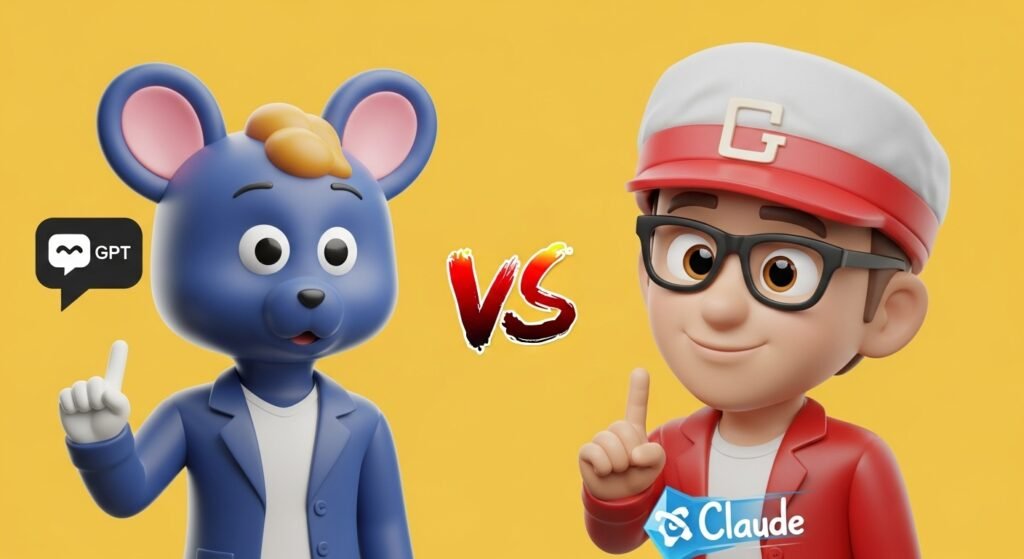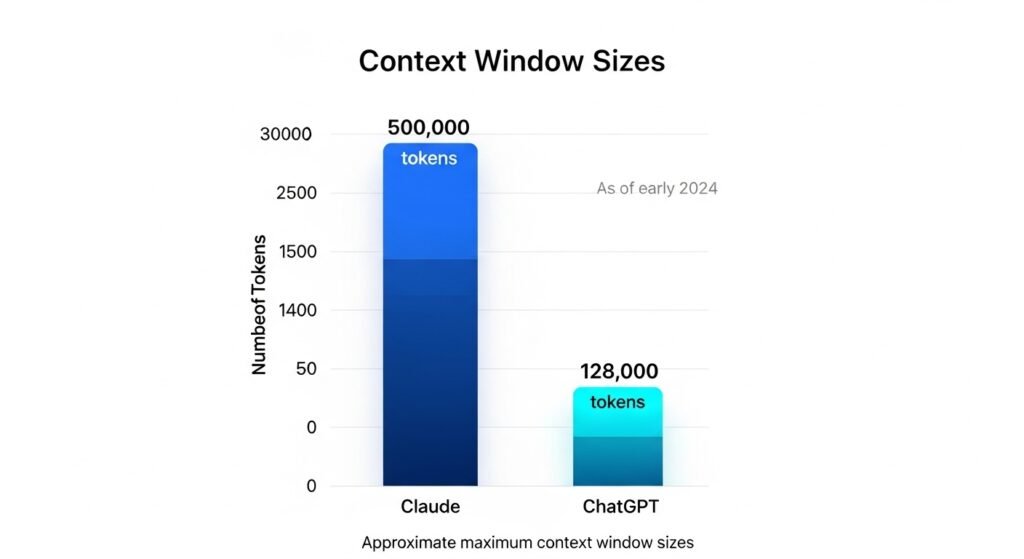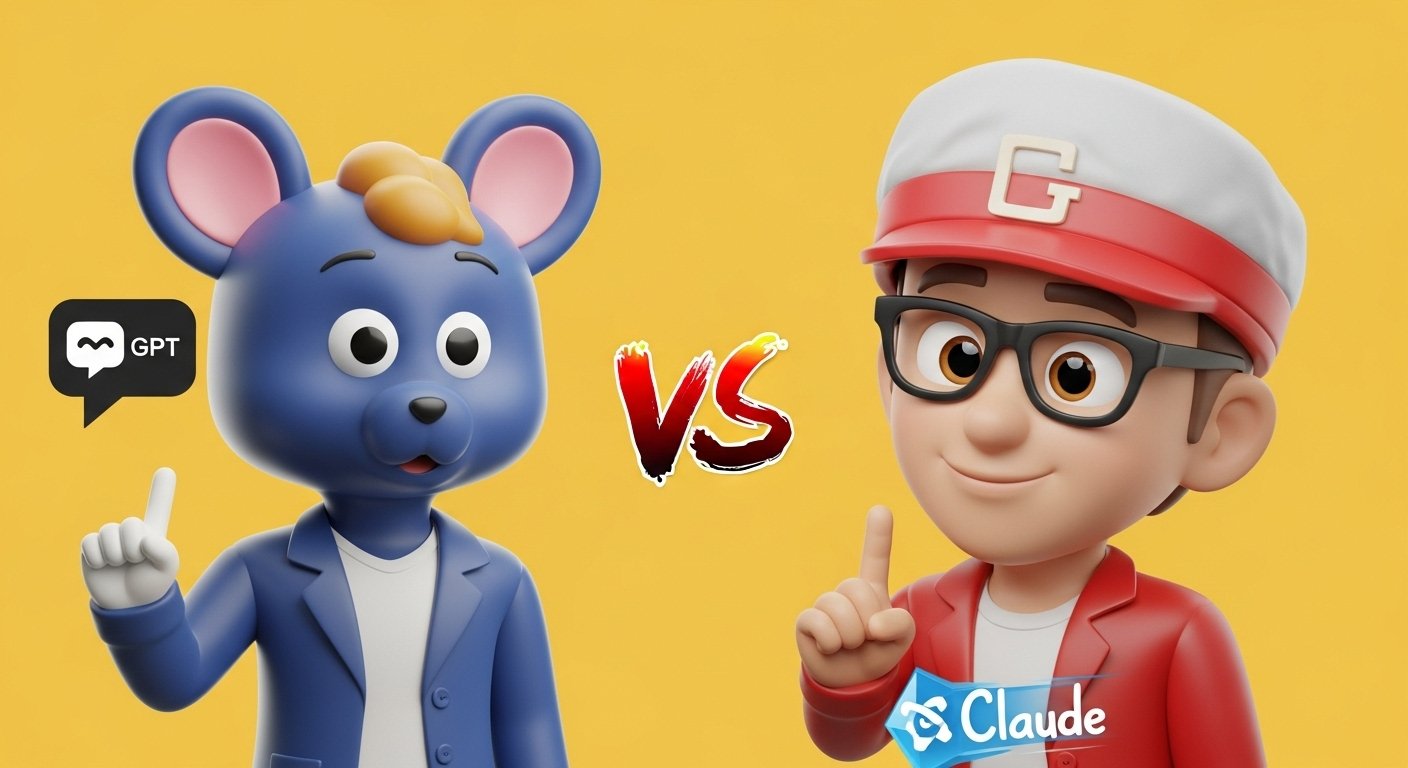Artificial intelligence chatbots have become essential tools for professionals, students, and creators. Two leading options, ChatGPT by OpenAI and Claude by Anthropic, stand out in 2025 for their advanced capabilities. While both can answer questions, write content, and assist with coding, they differ in ways that matter depending on your needs. As someone who interacts with AI daily, I’ve seen how these tools can transform workflows.

Latest Updates (2025)
Both ChatGPT and Claude have seen significant updates in 2025, reflecting the fast-paced evolution of AI technology. These updates enhance their capabilities and influence their suitability for different tasks.
- ChatGPT Updates: OpenAI has introduced GPT-4o, GPT-4o mini, o1, and o1-mini models, improving reasoning, coding, and creative tasks. A new Projects feature, launched in December 2024, allows users to organize chats and files for specific tasks. Rumors of ChatGPT-5 suggest a major upgrade, but no official release has been confirmed as of August 2025.
- Claude Updates: Anthropic released Claude Sonnet 4, Claude Opus 4, and Claude 3.5 Haiku, enhancing text analysis and coding. The Connectors Directory now integrates Claude with apps like Google Drive and Slack. The Artifacts feature supports real-time code visualization, making Claude a strong choice for developers.
These updates ensure both AIs remain competitive, with each pushing the boundaries of what conversational AI can do.
Key Differences
To understand which AI suits your needs, let’s compare ChatGPT and Claude across several key areas: development, context handling, writing, coding, multimodality, pricing, and safety.
Development and Models
- ChatGPT: Developed by OpenAI, ChatGPT uses models like GPT-4o, GPT-4o mini, o1, and o1-mini. These models are known for their versatility, handling tasks from casual conversations to complex coding. OpenAI’s long history in AI gives ChatGPT a broad feature set and widespread recognition.
- Claude: Created by Anthropic, founded by former OpenAI researchers, Claude uses models like Claude Sonnet 4, Claude Opus 4, and Claude 3.5 Haiku. Anthropic focuses on safety and natural language, making Claude ideal for tasks requiring human-like responses and deep reasoning.
Context Handling
- Claude: Can process up to 500,000 tokens, roughly 375,000 words, allowing it to handle very long documents or conversations. This makes it excellent for analyzing large datasets or research papers.
- ChatGPT: Has a context window of up to 128,000 tokens, about 96,000 words. While substantial, it’s less than Claude’s, making it better suited for shorter or medium-length tasks.

Writing and Creativity
- Claude: Known for its natural, concise, and human-like writing style. Its Styles feature lets users customize tone, making it great for creative writing or professional documents. Users often find Claude’s responses less repetitive and more nuanced.
- ChatGPT: Excels in versatility but can produce verbose or clichéd outputs. It’s effective for brainstorming and quick content creation, especially when paired with image generation.
Coding and Technical Tasks
- Claude: Offers Artifacts, a feature for real-time code visualization, which helps developers see outputs instantly. It’s praised for generating cleaner code in some cases, particularly for complex projects.
- ChatGPT: Includes the Code Interpreter for executing code directly, ideal for data analysis or scripting. Its coding capabilities are strong but may lag slightly behind Claude in visualization.
Multimodality
- ChatGPT: Supports image generation via DALL·E 3 and voice input/output, making it a go-to for tasks involving visuals or spoken interactions. This is a key advantage for creative or multimedia projects.
- Claude: Focuses on text, with no image or voice capabilities as of August 2025. Its strength lies in text-based tasks like summarization or editing.
Pricing and Plans
| Feature | ChatGPT | Claude |
|---|---|---|
| Free Tier | GPT-3.5, unlimited chats, rate limits | Claude Instant, ~40–50 messages/day |
| Paid Tier | $20/month (Plus, GPT-4, 8k/32k context), $200/month (Pro, o1 Pro) | $20/month (Pro, 100k context, ~200+ messages/day) |
| Team Plans | $30/user/month, workspace management | $30/user/month, shared Projects |
| API Pricing | GPT-4o: $2.50/1M input, $10/1M output | Claude Sonnet 4: $3/1M input, $15/1M output |
Safety and Ethics
- Claude: Uses Constitutional AI, a principle-based approach to minimize harmful outputs. This makes it a safer choice for users prioritizing ethical AI.
- ChatGPT: Employs Reinforcement Learning from Human Feedback (RLHF), which can lead to cautious responses. It’s effective but may refuse certain queries more often than Claude.
Use Cases
Choosing between ChatGPT and Claude depends on your specific tasks. Here’s when each shines:
When to Choose ChatGPT
- Broad Tasks: Perfect for drafting emails, creating presentations, or generating social media content. Its versatility suits a wide range of needs.
- Multimodality: Ideal for projects involving images (e.g., marketing visuals) or voice interactions (e.g., virtual assistants).
- Real-Time Data: Can browse the web for up-to-date information, useful for research or news-related tasks.
Example: A marketer needing quick social media images can use ChatGPT to generate visuals and captions in minutes.
When to Choose Claude
- Long-Form Text Analysis: Best for processing large documents, like research papers or legal texts, thanks to its 500,000-token context window.
- Deep Reasoning: Excels in tasks requiring complex analysis, such as summarizing lengthy reports or solving intricate problems.
- Coding with Visualization: Artifacts make it easier to visualize code outputs, ideal for developers working on complex projects.
Example: A researcher analyzing a 100-page report can use Claude to summarize key points accurately and quickly.
Frequently Asked Questions
Which is better for coding, ChatGPT or Claude?
Both are strong, but it depends on your needs. ChatGPT’s Code Interpreter is great for executing code and analyzing data. Claude’s Artifacts feature excels in visualizing code outputs, making it better for complex coding tasks.
How do their pricing models compare?
Both offer $20/month individual plans, with ChatGPT’s Plus plan including GPT-4 and Claude’s Pro plan offering a larger context window. ChatGPT has a $200/month Pro plan for advanced features, while Claude’s API is often cheaper for large-scale use.
Is Claude safer than ChatGPT?
Claude’s Constitutional AI focuses on ethical responses, potentially making it safer for sensitive tasks. ChatGPT’s RLHF approach is also safe but may be more restrictive in some cases.
Which is better for creative writing?
Claude is often preferred for its natural, less repetitive writing style, ideal for storytelling or professional documents. ChatGPT is versatile and great for quick drafts or multimedia projects.
Can ChatGPT generate images, and can Claude?
ChatGPT can generate images using DALL·E 3, while Claude is text-only and does not support image generation as of August 2025.
Final Thoughts
AI tools like ChatGPT and Claude are transforming how we work, create, and learn. By understanding their differences, you can choose the right tool to boost productivity and achieve better results. Whether you’re a writer crafting stories, a developer building apps, or a business professional streamlining tasks, these AIs offer unique benefits. Stay informed about updates, as both are evolving rapidly, and experiment with them to find the perfect fit for your needs.
